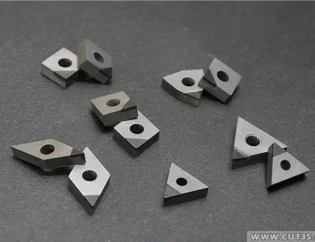We used metallographic microanalysis and hardness testing methods to study the cause of the failure of cold-punching mould, and proposed an effective measure to improve the life of the mold. Research shows that by optimizing the heat treatment process and processing technology, the material selection is more reasonable and the service life of the mold can be greatly increased.The life of the cold-punching mould is the key factor that can cause the industrial production efficiency failing to improve. The factors that generally lead to die failure include early failures such as chippingand breaking, or serious deformation of the die and no further use. How to improve the die The service life has become a hot topic that the mold industry is highly concerned about.1 Types and Causes of Failure of Cold DiesAccording to the cause of the failure of the mold, the common failure modes can be divided into four failure modes: fracture failure, wear failure, deformation failure, and fatigue failure.Failure formReason for failureFailure failureMold material toughness and strength is not enoughWear failureExcessive wear due to relative motion between the mold and the material being groundDeformation failureMaterial heat treatment deformation, stress concentration, excessive load on the mold, plastic deformation of the materialFatigue failureCracks are continuously generated and expanded under alternating stressCold punching die usually work under difficult and complicated conditions, so die failure is often accompanied by multiple failure modes. Figure 1 starts to crack after stamping 800 pieces.It is made of Cr12MoV wear-resistant high-chromium alloy steel, the design hardness of 55 ~ 58HRC. The quenching process of the mold is (870℃x1.5h + 1050℃x2h) In a vacuum furnace, drawing fire 200℃x 3h. The measured hardness of the mold is shown in Table 2.Fig. 1 Mold partsTable 2 Mold Parts Hardness Test (HRC)Analysis: As can be seen from Table 2, there is a non-uniform distribution of the hardness of the mold parts, which is caused by the uneven heating of the mold during the heat treatment due to the large size of the mold parts. As shown in the metallographic organization chart of Figure 2, the material segregation of the mold parts is very serious due to the insufficient forging during the forging process. There was no macroscopic plastic deformation at the fracture surface and it was granular, and it was judged to be brittle fracture. Figure 2 Metallic microstructureMeasure: Metallographic examination of the metallurgical dimensions is less than 3 levels after full forging. Roughing high-temperature quenching and tempering treatments are added between finishing and finishing. 2 Measures to Improve the Life of Cold Dies 2.1 Reasonable Material SelectionWhen carbon alloy steel is used for brittle fracture due to insufficient plasticity, better tough materials such as microhardened steel 6CrMnNiMoVSi(GD), 9Mn2V steel, low alloy CrWMn steel, 7CrSiMnMoV(CH) steel should be selected. When wear failure is the main failure mode, alloy steels with high carbon content and chromium content (such as Cr12, Cr12MoV), high-carbon medium-chromium alloy steel (Cr8MoWV3Si), 9Cr6W3Mo2V2 (GM) steel, 7Cr7Mo2V2Si (LD) steel, etc. should be used.2.2 Heat Treatment Process ImprovementFirst of all, we must improve the pre-heat treatment process to refine the solid solution of carbides, improve the morphology and distribution of carbides, and increase the plasticity of workpieces. The second is to determine a reasonable quenching conditions, shorten the high-temperature residence time, rotate into the coolant and rotate it to seek even cooling, in order to avoid the failure of the mold.2.3 Reasonable forgingHigh-chromium alloy steels often have severe segregation of carbides and are forged using the cross-draft method. The carbide level after forging is not greater than grade 3. Strictly control the forging temperature and prevent the generation of forging cracks. After the forging, it is often used to anneal the residual heat balls and prepare for the final heat treatment.2.4 Wire cuttingThe size of the wire cutting processing power directly determines the white bright layer thickness and micro-cracks size of the quenched martensite formed on the surface of the workpiece. In the final step of in-line cutting, a small amount of energy is often used for finishing, which can greatly reduce the thickness of the bright white layer and the depth of cracks. After the wire cutting is completed, the mold should be supplemented and tempered to eliminate the additional stress of the wire cutting.3 ConclusionThe working conditions of cold working molds are relatively complex and bad. In the course of use, molds are often intertwined with various kinds of damage. Through the optimization of the heat treatment process and processing technology, the material selection is more reasonable and the service life of the mold can be effectively prolonged.
Fonte: Meeyou Carbide









